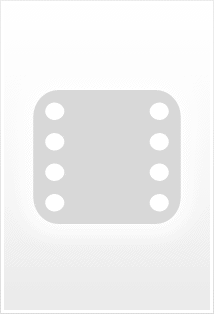If nothing else, you have to be willing to give Universal Studios credit for stubbornness - they just weren't willing to let go of a good thing! A year after "Frankenstein Meets The Wolfman" (which paired, well, Frankenstein's monster and the Wolfman) the studio decided to throw Count Dracula into the mix as well, and ended up with "House of Frankenstein," which features all three of Universal's favourite monsters. (As I understand it, some very early ideas had even more of Universal's monsters being thrown into the script; thankfully, sanity prevailed, and Universal showed that it had at least some shame in sticking with just its three best monsters.)
This movie is a bit choppy, to say the least. The three monsters never actually appear together. Dracula is only featured in the first half of the movie. A travelling horror show has acquired his coffin, complete with his skeleton with a stake through the heart. Dr. Niemann (Boris Karloff - no, he wasn't Frankenstein's monster in this) takes possession of the show, revives Dracula by removing the stake from his heart (which also magically recreates Dracula's clothing!) and lets him loose to gain revenge on those who had imprisoned him years before. (As an aside, Dracula just isn't Dracula when he's not Bela Lugosi; here, the part is played - rather weakly, in my opinion - by John Carradine.) Eventually Dracula ends up dead - again - and Niemann and his hunchbacked assistant (played by J. Carroll Naish) move on to Dr. Frankenstein's ruined castle where he wants to recreate Frankenstein's experiments. At the castle, he finds both the Monster (Glenn Strange) and the Wolfman (once again, Lon Chaney, Jr.) frozen in ice (remember the flood at the end of Frankenstein Meets The Wolfman). Not much is really made of Frankenstein's monster until the final few scenes of the movie, but the Wolfman wreaks a bit of havoc before being killed by a silver bullet fired by the Gypsy woman who's fallen in love with him (or at least with Talbot) which caused the hunchback to become very jealous.
It's clear by this point that Universal was interested in the monsters themselves more than in creating good and workable stories for them to appear in, which is probably why this particular incarnation of the monster genre (although House of Dracula would follow the next year) was mercifully coming to an end. You can only take even a good thing so far, and if you look at Universal's list of horror movies from the 30's and 40's you can see that they rode these three monsters pretty hard. I suppose that for a war-weary population in 1944 this was a bit of an escape from the all too ugly realities of everyday life. (4/10)
This movie is a bit choppy, to say the least. The three monsters never actually appear together. Dracula is only featured in the first half of the movie. A travelling horror show has acquired his coffin, complete with his skeleton with a stake through the heart. Dr. Niemann (Boris Karloff - no, he wasn't Frankenstein's monster in this) takes possession of the show, revives Dracula by removing the stake from his heart (which also magically recreates Dracula's clothing!) and lets him loose to gain revenge on those who had imprisoned him years before. (As an aside, Dracula just isn't Dracula when he's not Bela Lugosi; here, the part is played - rather weakly, in my opinion - by John Carradine.) Eventually Dracula ends up dead - again - and Niemann and his hunchbacked assistant (played by J. Carroll Naish) move on to Dr. Frankenstein's ruined castle where he wants to recreate Frankenstein's experiments. At the castle, he finds both the Monster (Glenn Strange) and the Wolfman (once again, Lon Chaney, Jr.) frozen in ice (remember the flood at the end of Frankenstein Meets The Wolfman). Not much is really made of Frankenstein's monster until the final few scenes of the movie, but the Wolfman wreaks a bit of havoc before being killed by a silver bullet fired by the Gypsy woman who's fallen in love with him (or at least with Talbot) which caused the hunchback to become very jealous.
It's clear by this point that Universal was interested in the monsters themselves more than in creating good and workable stories for them to appear in, which is probably why this particular incarnation of the monster genre (although House of Dracula would follow the next year) was mercifully coming to an end. You can only take even a good thing so far, and if you look at Universal's list of horror movies from the 30's and 40's you can see that they rode these three monsters pretty hard. I suppose that for a war-weary population in 1944 this was a bit of an escape from the all too ugly realities of everyday life. (4/10)
